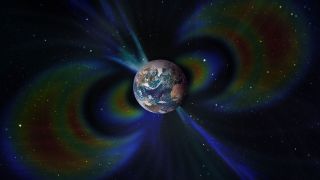1. Player positioning
- Serving player or team stands behind the baseline to serve and remains there or just inside to hit serve return after it bounces (Double Bounce Rule).
- Receiver typically stands at or near the baseline to return serve; however, be alert for the possible need to move forward to return a shorter serve.
- Receiver’s partner may stand anywhere, but is usually positioned at the NVZ line on his/her side of the court.
2. Getting to the net
- After returning the serve the receiver should quickly move forward to the NVZ line to a position parallel with his/her partner.
- The serving team should both move toward the NVZ line together as soon as possible after the third shot (return of serve return).
- Players should attempt get to the NVZ line in time to be ready to return the next ball hit to them by the opposing team. However, if caught mid court (no man’s land), stop and assume the ready position before hitting the ball (split step). It may take two or three shots to get to the NVZ line safely and in balance.
- Once at the NVZ, stay there. Don’t move back unless it is necessary to return a lob, then return to the NVZ line ASAP.
3. Partners move in unison
- The partner hitting the ball determines when and where the team moves.
- At the baseline, when one partner hits the ball and moves toward the NVZ at the angle he/she hit the ball, the other partner should move forward also, but not before.
- With partners separated – one at the baseline and one at the NVZ -- an inviting gap is created for the opponents to place a winning shot.
- When one partner is pulled to the sideline to return a shot the other partner moves toward the centerline to close the gap in the middle, which is a higher percentage shot for the opponent than trying to pass down the other sideline, which is left open. [Note: Explain the string theory: Imagine you and your partner are tethered by string; if your partner gets pulled wide you can't allow the string to break by staying still. If the string is pulled six feet, you move six feet.]
4. Pickleball is more about placement than power
- Keep the ball in play. The doubles team who makes fewer unforced errors is most likely to win.
- According to an accomplished tournament player and instructor, 75 percent of rallies are won (or lost) because of errors; only 25 percent are actually earned or won by a good shot.
- Rather than trying to hit a winner every shot, it is better to place the ball back over the net in control and let the opponents make the fault, or wait for a chance to hit a sure winner.
- The safest place to hit a ball in doubles it is deep down the middle – this minimizes the chances of hitting wide and may cause confusion over which opponent should return the ball.
- Try to hit to your opponent’s backhand, especially on the serve – most players have less power and are less comfortable hitting with their backhand. However, many top players prefer the backhand for a majority of their shots because this across-the-body shot precludes a significant backswing, which often leads to over-hitting. A well-practiced backhand can create as much or more control as a forehand.
5. Communicate with your partner
- Get in the habit of calling “Mine,” “I Go,” “Yours,” “You” or something similar for every shot, especially if playing with an unfamiliar partner and if one partner is right handed and the other left handed.
- Decide who will take lobs – it may be the faster partner even if the lob is on the other side of the court.
- Call “Switch” if you move to your partner’s side of the court – it is quicker to stay there for the next shot than to run back to your side. But make sure you are in the correct court position before the next rally begins (based on the score).
- Decide who handles shots coming down the middle of the court. How far over the centerline will the partner with the paddle hand in the middle take balls? When partners are left- and right-handed both forehands or both backhands will be in the middle.
- Warn your partner by calling “Bounce it!” if a ball hit high appears as if it may land out. Yell “No!” or “Out!” before the ball strikes the court if you are sure it is going out. (Calling “Out” after the ball strikes the court is a line call and the ball is dead.)
- Bolster team confidence by complimenting your partner on good play – after the rally ends. Never criticize your partner for faults – it just makes matters worse.
- Discussing team strategy, such as which opponent to hit to, before a game starts, between points, or during a timeout gives the team a common goal and demonstrates that the players are united as a team and not playing as two individuals.
- Although the correct player to take a shot is not always the one in the forehand position, if the ball is heading in your partner’s direction, don’t take away his/her forehand shot with your backhand unless he/she is obviously unable to reach the shot or yells “Yours.” Poaching is a more advanced strategy.





.jpg)


.jpg)




.jpg)








